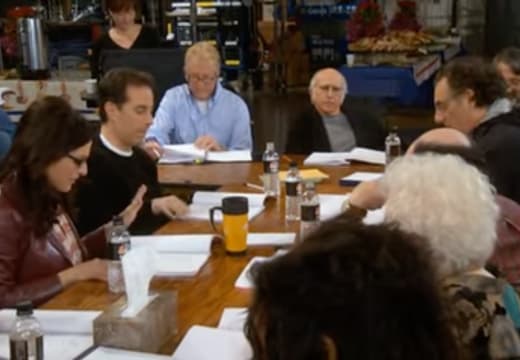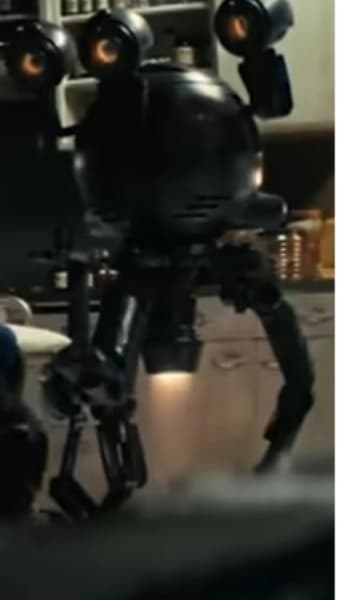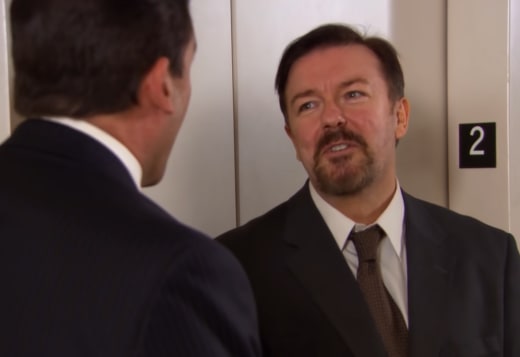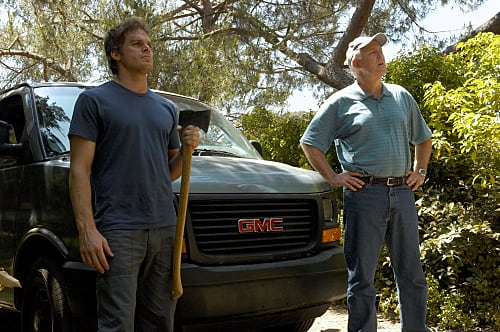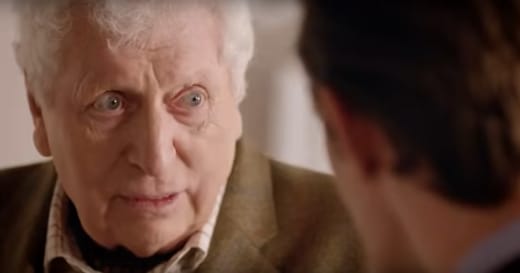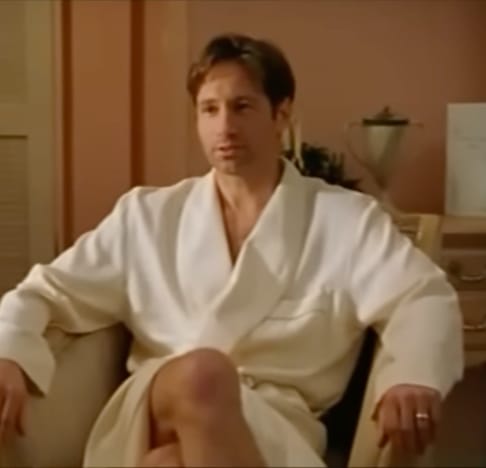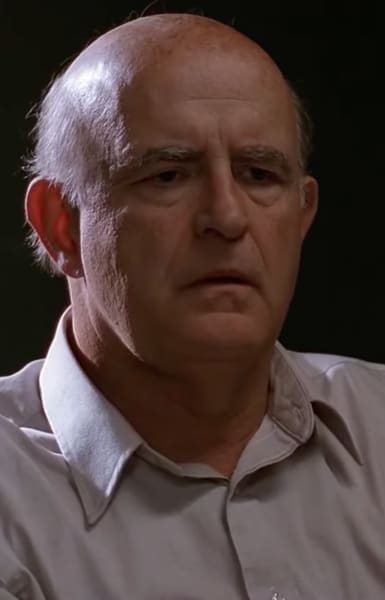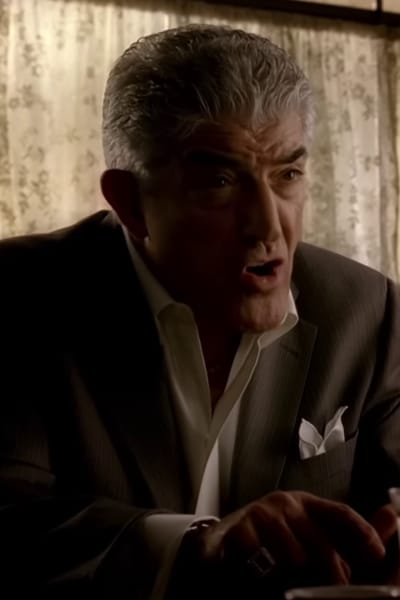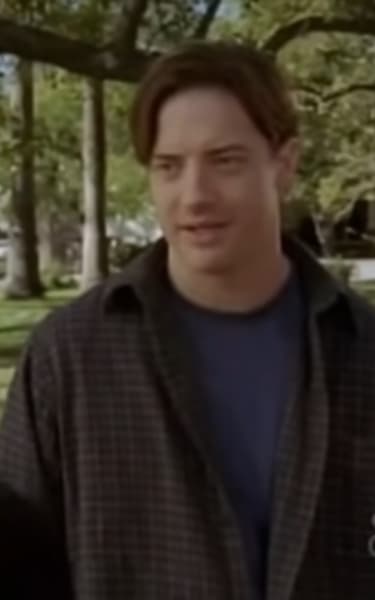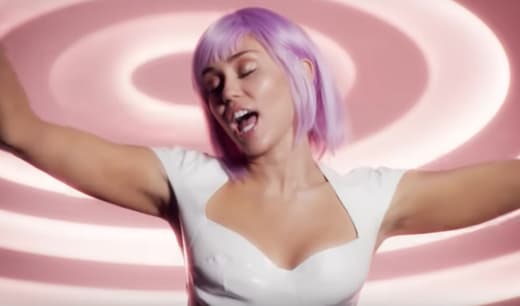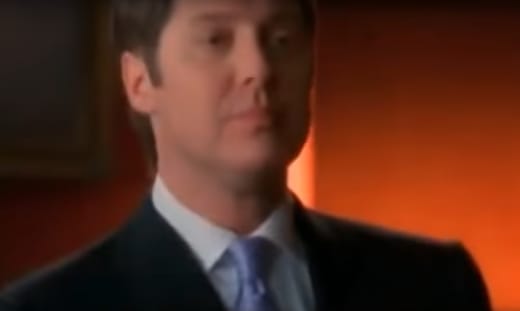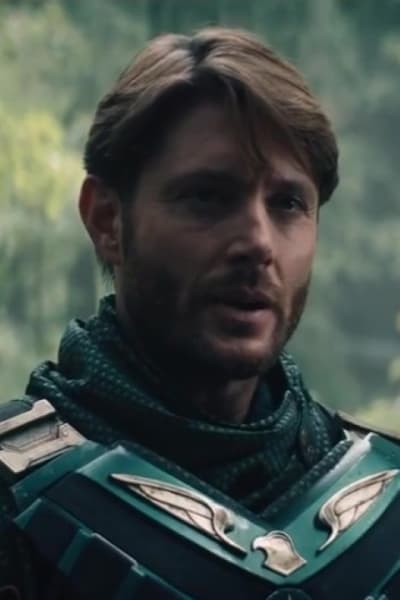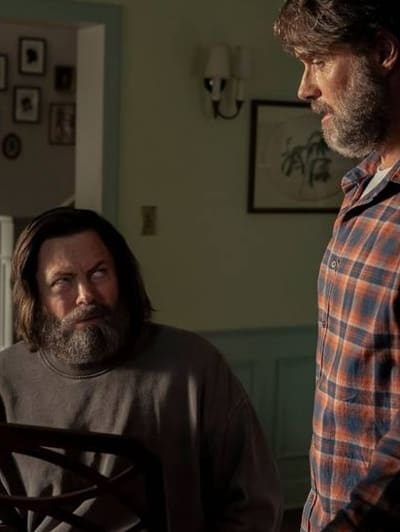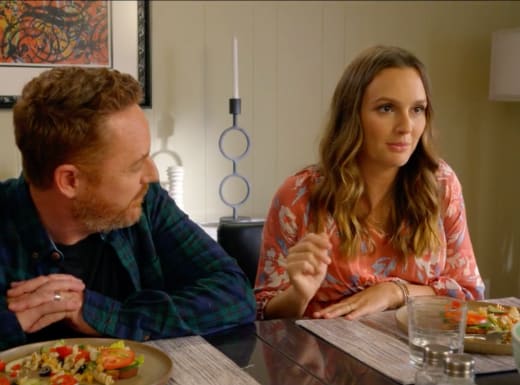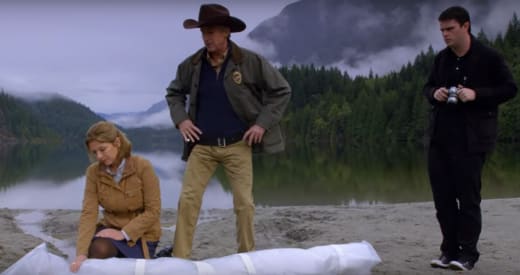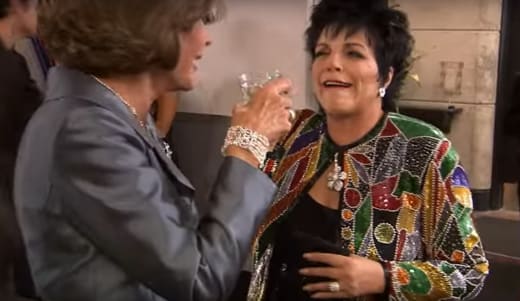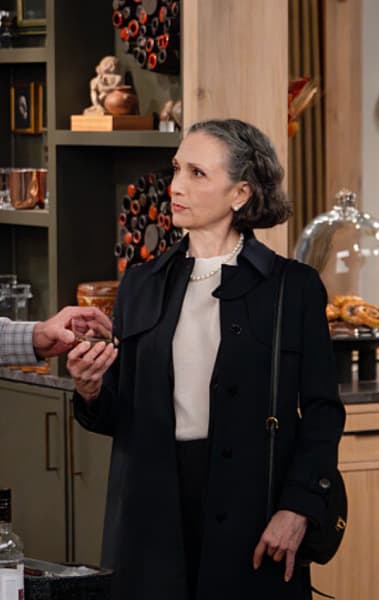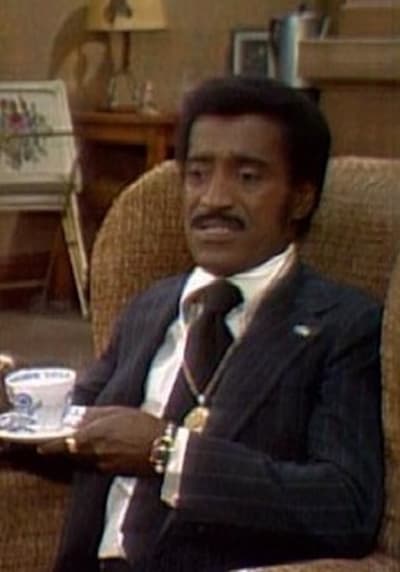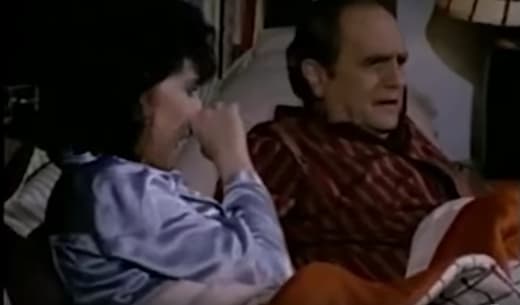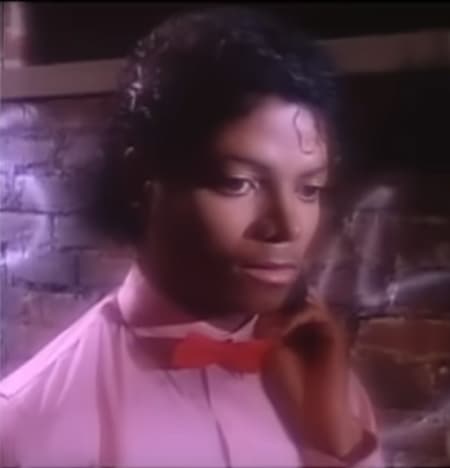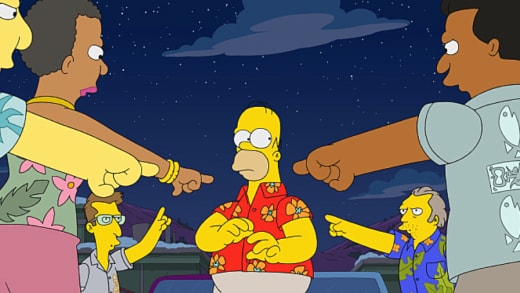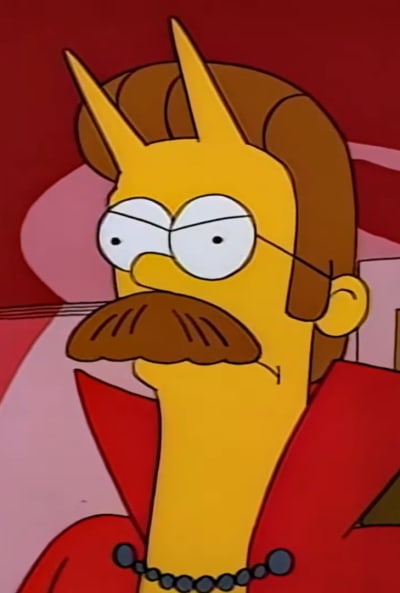The one fatal mistake that most TV shows make is using TV cameos gratuitously. If the cameo doesn’t mean something to the audience and the characters in the show, it’s pointless, and little more than a random Stan Lee Appears gag.
On the other hand, too many shows have fallen into the trap of celebrity worship with their cameos.
Having cast members gawk and gape at their celebrity crush as if to reinforce the celebrity’s prestige while doing nothing for the universe we enjoy is a waste of talent.
For this list of the top TV cameos worth celebrating, we will focus on iconic cameo appearances that gave the show some unforgettable moments that made TV history.
Seinfeld Cast, Curb Your Enthusiasm
What better way to give Seinfeld the better ending many feel it deserved than by bringing back the cast and the original set and doing a bit of self-parody?
Bonus points for Larry David reuniting with Jerry once more on the series finale of Curb to repackage the heinous jail “Finale.”
Only this time, it was done with a sarcastic commentary on the show’s ode to misery.
Matt Berry, Fallout
It’s hard to pinpoint just one memorable cameo appearance in Fallout since the post-apocalyptic tragicomedy is filled with bizarre cameos.
With roles that are disconcertingly absurd (comparable to all the heads in Futurama), Matt Berry of The IT Crowd and What We Do in the Shadows fame makes the most impact.
Celebrity Sebastian Leslie has sold the rights to his voice likeness to General Atomics International to use it for their Mr. Handy line of robots.
Leslie was underpaid for his voiceover work, and robots used his voice to do the most unspeaking things! What a nightmare for a voiceover actor.
Ricky Gervais, The Office
It’s hard to imagine the egos of Michael Scott and David Brent coexisting in the same company and on the same show.
No wonder The Office fans geeked out when the unthinkable happened, and both Dundler Mifflin and Wernham Hogg bosses finally met — and got along.
It was the culmination of cringe-worthy British and American comedies finally being awkward together.
John Lithgow, Dexter
Long after he masticated scenery as the alien-man Dick Solomon (doing comedy as subtle as ALF on a binger), John Lithgow did the unthinkable – and for a moment was no doubt the envy of every typecasted actor.
He outperformed his best comedy work by taking on the irredeemable and psychopathic role of Arthur Mitchell, The Trinity Killer.
The brilliance of Lithgow’s work here is that he doesn’t entirely play Mitchell straight.
He uses comedy and menace to keep the audience watching and grimacing at what he would do next.
Tom Baker, Doctor Who
Dr. Who is such a multi-decade institution.
It’s hard to imagine the show ever pulling these wide-reaching parts together for any reunion.
Yet, when Tom Baker returned to Dr. Who on the 50th-anniversary episode, that’s what we got.
We saw a cameo from one of the most famous doctors, along with some other cameos, including Matt Smith, Paul McGann, Christopher Eccleston, Colin Baker, and Sylvester McCoy.
David Duchovny, The Larry Sanders Show
Long before celebrities became demonic versions of themselves in the 2010 era, The Larry Sanders Show of the 1990s was the first to introduce us to celebrity caricature appearances.
This was back at a time when reality TV was ghettoized to daytime trash television, and celebrities paid millions to avoid any bad press.
Therefore, to see celebrities walking the line between reality and fiction and parodying their narcissism and psychosis was ahead-of-its-time comedy.
David Duchovny developing an aggressive crush on Larry is the standout 1990s cameo.
Peter Boyle, The X-Files, “Clyde Bruckman’s Final Repose”
Speaking of David Duchovny and The X-Files, Peter Boyle (before coming to modern fame in Everybody Loves Raymond) was the talk of the town after playing Clyde Bruckman.
Bruckman is a real psychic who is cursed with the ability to see people’s deaths in advance.
The episode’s mix of comedy, horror, and tragedy received some of the show’s best reviews, highest ratings, and an Emmy win for writer Darin Morgan and guest star Peter Boyle.
Frank Vincent, The Sopranos
The Sopranos was another show that whacked and buried the shark when it came to cameo appearances.
It was a very 2000s prestige thing – to be cast as a bad guy in The Sopranos and meet an untimely death.
While many came and went, including Steve Buscemi and Joe Pantoliano, who can argue that Frank Vincent as Phil Leotardo was one of the most hated Sopranos villains?
The fact that he was also one of Goodfellas’ most memorable loudmouths only legitimized The Sopranos as gangster show canon.
Brendan Fraser, Scrubs
Brendan Fraser plays Ben Sullivan.
He was Perry Cox’s brother-in-law and gave a tour-de-force performance eliciting laughs and cries as the story arc progressed over a few seasons.
The final goodbye in Scrubs: “My Screw Up” is TV comedy at its most ruthlessly painful, and we finally see a chink in Dr. Cox’s armor of cynicism.
Miley Cyrus, Black Mirror
Black Mirror is just a virtual rolodex for movie studios that are all out of original ideas.
Before the horror comedy M3gan came out, we had the delightful “Rachel, Jack, and Ashley Too” episode, which told the same story of an out-of-control Chucky-esque doll who malfunctions and goes on a killing spree.
Miley Cyrus plays herself as well as the voice of the Ashley Too robot.
While the episode pokes fun at celebrity culture, AI, and Cyrus’s overexposure, what’s groundbreaking is that it’s arguably the first Black Mirror episode with a happy ending.
While the episode might be polarizing to fans now, when it first debuted in 2019, it was a knockout — all the more so for predicting the triumph of AI in a pre-COVID world of coddled avatars.
James Spader, The Practice
James Spader has been freaking people out for decades, but it took a star-making role on The Practice for him to shine on mainstream television.
As Alan Shore, a verbose, self-important, but ultimately chaotic moral authority, he survived the wreckage of The Practice’s final season.
He used his cameo as a pilot launch for Boston Legal.
The repercussions of James Spader’s first TV performance can still be felt in subsequent shows like Blacklist.
The Boys
Two moments made Eric Kripke’s superhero farce, The Boys, rise above the mediocrity of just another superhuman soap opera.
The outstanding performance by Antony Starr as Homelander and the madcap anti-cameo appearance by Jensen Ackles as Soldier Boy in season 2.
Jensen Ackles shines as a WWII-era hero who can’t fathom modern culture.
But his parody of toxic masculinity stabs at the heart of every Supernatural fan who still recognizes some of Dean’s boyish mannerisms in the empty-headed and emotionally decayed face of Soldier Boy.
Murray Bartlett and Nick Offerman, The Last of Us
It took The Last of Us just a few episodes to pick up on one of The Walking Dead’s most blatant flaws.
Namely, the recurring theme that survivalism was all that mattered in a doomed world.
With Bill and Frank’s romantic comedy/tragedy side quest, The Last of Us reminded viewers that love can win in the end, and life is all about building good memories before the inevitable.
Amazingly, the show transcends politics and finds the humanity in all of us, even in a world where every man is for himself.
How unfortunate people still see it as a “woke” episode when it’s a timeless and genderless contemplation of life.
Leighton Meester, The Orville
How strange and upsetting that The Orville, a successful and nostalgic tribute to Trekkie low-conflict storytelling, still hasn’t returned from the black hole that is “on hiatus.”
Still, one of the show’s best storylines was the interdimensional romance between the simulated Laura Huggins and Lt. Gordon Malloy, who fell in love with an AI based on a time capsule.
The romance’s ending is bleak but perfectly logical.
This is a testament to Leigton and Scott Grimes’s acting ability, which adds pathos to an utterly trippy writing experiment.
Cast of Twin Peaks, Psych
Psych may not have won Emmys, but there was no Emmy for silly old-school TV reunions.
While reuniting the cast of Twin Peaks in a reincarnated “Dual Spires” existence wasn’t the only reunion the show tried (Clue, anybody?), it perfectly reflects the show’s spirit—one half bickering bromance, the other half homages to much better shows and movies.
It’s very much the spirit of 2006-2014.
Liza Minnelli, Arrested Development
Liza Minnelli was so good in Arrested Development, and in the early 2000s, she hardly stood out among an ensemble cast and spectacular alums guest stars.
However, playing the main rival of Lucille Bluth, Lucille Austero, Liza Minnelli gave one of her career-best performances.
She managed to play Lucille 2 as a bumbling, heart-on-her-sleeve yutz, one who stubbornly resisted sinking to the depths of Hell that was Lucille Bluth’s morals and who found a silver lining in what very little anybody gave her.
While in the end, that cost her everything (the series finale was surprisingly dark), Liza channeled her mother and walked the yellow brick road to find and keep Lucille 2’s sanity.
Bebe Neuwirth, Frasier
Very few shows utilize guest stars to their fullest potential, and in the case of Frasier, Bebe Neuwirth shows up as Lilith (Frasier’s ex-wife) solely as chaotic energy.
She also lives up to her Hellish name, as every appearance brings conflict, conflagration, and then exhausted resolution.
She couldn’t help but shape the Frasier universe every time she appeared.
If only more shows treated cameo guest appearances as wild cards instead of stunt casting.
Sammy Davis Jr., All in the Family
Sammy Davis Jr.’s appearance on All in the Family was a historical event, not only because of Sammy’s fame but also because it was one of the first sitcoms to mock the stupidity of racism and get huge laughs doing it.
Norman Lear, as a liberal, was so beyond the snark of closeted racists.
He had heard it all and was bored of hammering the same points he had already made and that other sitcoms had begun riffing on.
He created Archie Bunker as a parody of old-world values, the laughing stock of a generation long gone.
With Sammy’s Visit, he simultaneously denounced racism while also finding vulnerability in Archie’s character and enough humor to record the most extended and loudest studio audience laugh in history.
Suzanne Pleshette, Newhart
It was a stroke of genius for Walter White (Bryan Cranston) to “wake up” as Hal Wilkerson of Malcolm in the Middle in a YouTube comedy short following the end of Breaking Bad.
At the time, however, many millennials didn’t realize this was an homage to Bob Newhart’s gag from his second show, Newhart.
In the series finale, Bob wakes up in another universe — the first one he created in The Bob Newhart Show with Suzanne Pleshette.
You might think only a man as psychologically adept as Bob could create a mind-blowing concept and make it funny.
You’d be wrong, though, because famously, his real-life wife first suggested the idea, as she said so much about the second universe was “inexplicable.”
Why not just combine universes when all logic has been lost?
Michael Jackson, “The Simpsons”
How can we explain to Gen Zers the cultural significance of Michael Jackson appearing on The Simpsons at the peak of his career and the creative peak of one of television’s all-time greats?
It was an event that predated celebrity stunt casting, at least in animation, and that predicted all gratuitous cartoon cameos ever after.
It was also right in the middle of a Boomer vs. Gen X culture war, which saw President George H.W. Bush lambasting The Simpsons for bringing down Americans’ morals.
But what we remember most about “Stark Raving Dad” was how Jackson’s song (written by Jackson but performed by Kipp Lennon) was only a catalyst for exploring the mutual respect and love that Bart and Lisa were slowly developing for each other.
People will unlikely remember how the episode eschewed Michael Jackson’s fame and even parodied celebrity worship with the Leon Kompowsky character, who pretended to be Michael Jackson because it made people happy.
Unfortunately, people won’t remember that the point was making music and being kind to family – and Jackson’s overhyped Springfield appearance was a bust.
“Stark Raving Dad” is one of the brilliant milestones of television that aged like milk because of Jackson’s sex scandals and the new lens of ethical restraint that now shapes our memories of the past.
It’s also bound to be remembered someday as one of television’s “lost media” stories since Disney has censored the episode from The Simpsons streaming.
Matt Groening has seconded the decision, stating that he believes Jackson’s intention of appearing on the show was for “grooming” purposes.
The decision has outraged TV historians, with some media, like Isaac Butler of The Slate, stating, “It’s a growing trend of corporations using their consolidated power and the death of physical media to do damage control by destroying works by troublesome artists.”
However, what I will remember most about Michael Jackson’s appearance on The Simpsons was what the show asked me to do.
That is to consider the character of Leon Kompowsky, a mentally ill man who was angry about himself and his life until he started playing Michael Jackson, which earned him respect.
The story arc was prophetic of our time while also casting a shadow on Jackson’s damaged and perhaps insatiable ego.
At the end of the day, do you sing for fame and money, or do you do it for the art, for the joy of the experience?
That’s what “Stark Raving Dad” meant to me, and it was a lesson some Simpsons fans may only understand as they age.
Michael Arangua is a staff writer for TV Fanatic. You can follow him on X.

